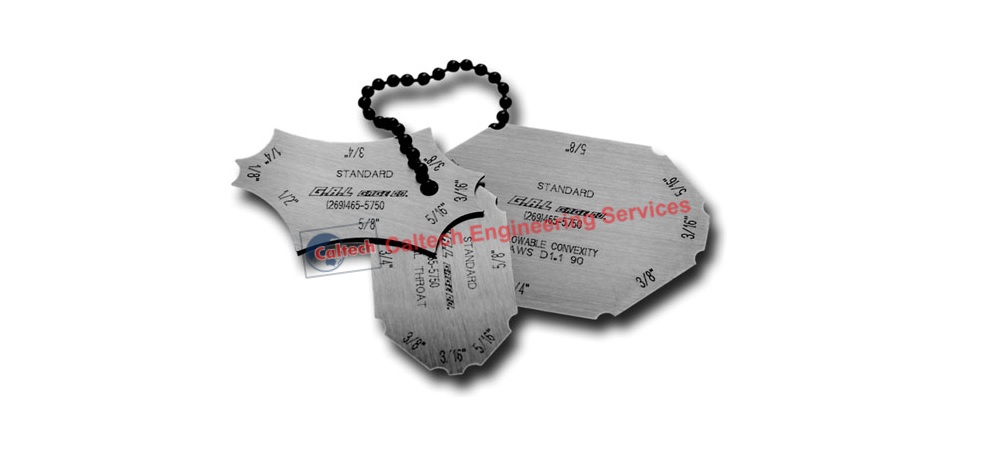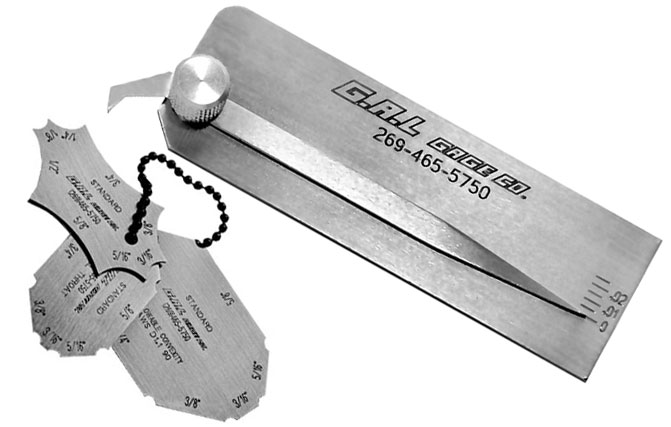Cutting-edge Techniques to Fillet Weld Examination and Screening: Enhancing Weld Top Quality and Conformity Specifications
In the world of welding, the high quality and stability of fillet welds play an essential duty in making sure the structural stability and reliability of various industrial parts. With the continuous drive for improved efficiency and conformity with rigid criteria, the exploration of cutting-edge techniques to fillet weld examination and screening has become important. As markets progress, the conventional methods might no longer be enough in meeting the needs of modern welding applications (Gauge Fillet Weld). By embracing cutting-edge technologies and methods, a new perspective of possibilities arises in the realm of weld quality evaluation and adherence to conformity requirements.
Advanced Non-Destructive Screening Techniques
Making use of cutting edge modern technologies, advanced non-destructive testing approaches play an important role in ensuring the honesty and quality of fillet welds. These techniques, such as phased range ultrasonic testing (PAUT) and magnetic bit screening (MPT), offer comprehensive understandings into the weld's internal structure without causing any damage to the product. PAUT, as an example, uses multiple ultrasonic aspects to check the weld from numerous angles, supplying a thorough visualization of potential issues like absence of blend or fractures.
Similarly, MPT works in identifying surface-breaking issues by using an electromagnetic field and iron bits to the weld location. This technique is specifically useful for identifying discontinuities that might compromise the weld's stamina. By using these sophisticated non-destructive screening methods, weld assessors can precisely examine the high quality of fillet welds, ensuring compliance with market requirements and policies. The capacity to find problems early on not just enhances weld top quality but additionally avoids costly rework or failures in architectural stability, underscoring the relevance of these cutting-edge testing approaches in welding examinations.
Robotics and Automation in Evaluation

The integration of robotics and automation has revolutionized the inspection process for fillet welds, improving performance and accuracy in high quality evaluation. Robotics supply specific control and repeatability in checking welds, ensuring consistent and trusted results. Automated systems can be programmed to adhere to specific assessment courses, ensuring complete insurance coverage of welds and decreasing the threat of human error.
Robotic examination systems furnished with advanced sensors can discover and gauge weld features with high accuracy, providing in-depth information for evaluation. These systems can recognize issues such as cracks, absence of fusion, and porosity, making it possible for punctual corrective actions to be taken. Furthermore, robotics and automation permit for real-time data collection and evaluation, providing instant feedback to operators and assisting in quick decision-making processes.
In addition, the use of robotics and automation in fillet weld inspection improves total productivity by decreasing examination times and increasing examination throughput. By simplifying the assessment process, suppliers can make sure weld high quality and conformity standards are met successfully, ultimately leading to set you back savings and enhanced product high quality.
Using Artificial Intelligence for Evaluation
Man-made knowledge plays a pivotal function in boosting the effectiveness and precision of analysis in fillet weld evaluation processes. AI algorithms can swiftly refine huge quantities of information from weld assessments, identifying flaws or incongruities that may be challenging to recognize with the naked eye.
In addition, AI systems can gain from previous examination data, continuously our website improving their capacity to identify potential flaws and deviations in fillet welds. This flexible discovering capability boosts the general top quality control procedure, reducing the probability of human error and making sure that welds meet the called for criteria. By incorporating artificial knowledge right into fillet weld analysis, industries can accomplish greater levels of effectiveness, uniformity, and conformity in their evaluation techniques.
Portable Equipment for On-Site Examination
Enhancing field assessment efficiency, the fostering of mobile devices revolutionizes on-site assessment processes for fillet welds. These devices use versatility and convenience, permitting assessors to conduct detailed evaluations in numerous areas, consisting of challenging or remote environments. Portable tools such as ultrasonic screening devices, magnetic bit evaluation devices, and digital radiography systems supply real-time information and high-resolution imaging abilities, enabling quick decision-making and instant feedback on weld high quality.
One considerable advantage of mobile tools is their capacity to simplify inspection procedures, lowering downtime and boosting overall efficiency - Gauge Fillet Weld. Inspectors can easily carry these tools to different task websites, getting rid of the need for transporting hefty machinery or elements to off-site centers. Additionally, the portability of these tools promotes cost-effectiveness by minimizing transportation expenses and increasing examination timelines
Additionally, the usage of mobile tools for on-site inspection promotes positive quality assurance steps, as assessors can without delay determine and attend to any type go to these guys of prospective welding issues or disparities. By including these ingenious modern technologies into on-site inspection techniques, welding professionals can ensure conformity with industry criteria and enhance weld high quality, ultimately leading to enhanced structural honesty and security in various welding applications.
Integration of Data Administration Equipment

Having maximized on-site assessment processes through the use of mobile tools, the following stage entails the seamless assimilation of information administration systems to additionally boost efficiency and information evaluation capacities in fillet weld evaluation and screening. By incorporating data monitoring systems into the evaluation process, companies can streamline information collection, storage space, and evaluation. This assimilation permits real-time tracking of weld top quality, immediate recognition of flaws, and timely decision-making to remedy any kind of problems that might arise throughout the inspection procedure.
Data monitoring systems play a critical duty in systematizing assessment data, helping with very easy gain access to for authorized workers, and guaranteeing data integrity and security. Via the combination of these systems, examiners can generate detailed reports, track historical data for pattern evaluation, and boost total procedure performance. In addition, the combination of data administration systems makes it possible for smooth communication in between different stakeholders included in the evaluation procedure, fostering partnership and boosting total quality assurance steps. Ultimately, the combination of data administration systems serves to boost the standards of fillet weld assessment and screening, making sure conformity with industry regulations and boosting weld quality.
Final Thought
To conclude, cutting-edge techniques to fillet weld inspection and screening have substantially boosted weld quality and compliance standards. Advanced non-destructive screening methods, robotics, automation, artificial knowledge, mobile tools, and information administration systems have actually revolutionized the means weld evaluations are conducted. By utilizing these modern technologies, markets can guarantee that welds fulfill the called for top quality criteria and policies, ultimately enhancing general efficiency and security in welding procedures.

Having actually maximized on-site examination procedures via the use of portable tools, the following stage entails the seamless combination of data administration systems to even more boost effectiveness and information analysis capacities in fillet weld inspection and screening. Ultimately, the assimilation of data monitoring systems offers to boost the criteria of fillet weld inspection and screening, guaranteeing compliance with industry policies and enhancing weld top quality.
